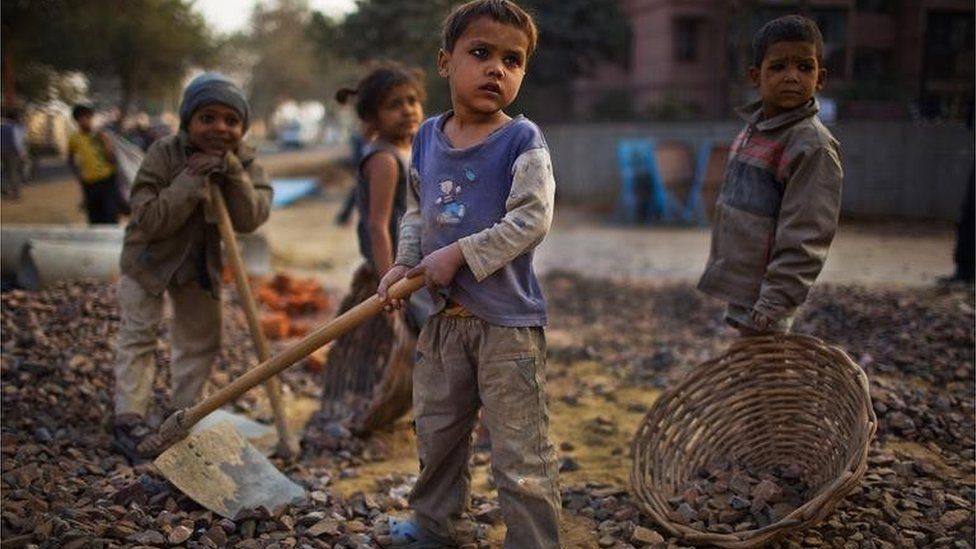The adoption of the Sustainable Development Goals (SDGs) by world leaders in 2015 included a strong commitment to eradicate all kinds of child labour by the year 2025. The International Labour Organization (ILO) and UNICEF raised alarms in June of last year. They reported the first startling rise of child labourers throughout the world in 20 years. This occurred between 2016 and 2019, four years after the establishment of the UN Sustainable Development Goals.
ILO and UNICEF’s latest worldwide estimates are, to put it mildly, stupefying. At the start of 2020, an astounding 160 million youngsters were working as child labourers, including 63 million females and 97 million boys. It amounts to one child in ten.
While roughly 79 million of these kids were working in dangerous jobs, a staggering 86 million of them were doing child labour in Sub-Saharan Africa alone. And before the epidemic started, the world’s wealth had increased by $10 trillion.
All of this has had a terrible effect on the health, happiness, security, and overall development of these kids. How have we let them down?
COVID-19 has just made things worse. By the end of this year, over 9 million extra children worldwide face the possibility of being forced into child labour due to mounting economic shocks, declining family incomes, and protracted school closures.
The truth is that children continue to suffer the most, whether it’s in Ghana, Guatemala, Dhaka, or Delhi. According to the 2011 Census, there were 10.13 million child labourers in India alone. The campaign against child labour, however, needs substantial improvement. According to the National Crime Records Bureau’s (NCRB) most recent Crime in India 2020 report, only 705 child labourers were saved as a result of the 476 FIRs filed under the Child Labour (Prohibition and Regulation) Act.
Despite millions of dollars in investment and several policy and programmatic measures, child labour has grown, making the 2025 objective even more challenging to accomplish and widening the gap between planning and implementation.
For instance, more than half of all child labour in the world—greater than the combined number of children in the USA and Europe combined—occurs in Africa. This is a result of our systematic disparities, which disproportionately affect African children, as well as our racist worldview. This entails underrepresenting the global South in international institutions; deprioritizing the issue of child labour in our social and political narratives, and failing to provide African children with their rightful share of global policy and financial resources.
When we have undone decades’ worth of progress within the SDGs’ first four years, we cannot claim to be upholding them. For a youngster who is in pain, our words and promises are meaningless and unimportant. We will have failed as a generation if we let our kids down.
Is it so difficult to understand what Tara Banjara, a 17-year-old, said at the 5th Global Conference on Eliminating Child Labour, which was held in Durban last month? She spoke on stage with Guy Ryder, director general of the ILO, about how she was saved from child labour and went after her dreams. Tara, who is determined to become a police officer, stressed the need to alter our mentality and stop assuming that the only option for children from underprivileged neighbourhoods is the minefield of child labour rather than schools.
The Bachpan Bachao Andolan saved a bright lawyer named Amar Lal from a brick kiln, and he later brought up yet another dimension in Durban. He said that even a small portion of the funds used to purchase weapons and construct military facilities might make a significant dent in the epidemic of child labour.
Nobel Peace Prize winner Kailash Satyarthi, a supporter of children’s rights, believes that social protection is one of the most effective weapons in the battle against child labour. He urged world leaders to work toward direct social protection for children at the Durban conference, demanding a fair share for children in our policies and resource allocation. This will not only ensure access to and continuation of education but will also protect children from a variety of risks and unpredictability that can quickly return them to exploitation.
This should now serve as the guiding concept given that 90% of children in low-income countries and 74% of children globally do not have access to social safety. All children and expectant mothers in low-income nations might benefit from social security for about $53 billion annually—less than 10 days’ worth of military spending.
Child labour has all but disappeared in western nations where social security receives the lion’s share of spending. We have evidence that child labour may be reduced even in developing countries. In Brazil, conditional cash transfers to households in the lowest quintile have been shown to boost school attendance and reduce child labour in high child labour use regions.
In India, the Mid Day Meal programme has significantly decreased stunting and increased enrolment in schools by over 95%. Nothing can go on as normal. We understand the issue. The answers are available. To make better judgments and hold ourselves and each other responsible, we need bravery, compassion, and a shared will.
The issue of child labour cannot be eradicated on its own unless children are taken into account in our budgets and plans. Millions of children being held captive in mines, farms, or factories make any development goal impossible to achieve.
The only way to stop child labour is in this way. No amount of economic expansion will be viable if one million or more members of our generation—both present and future—are slaves.
